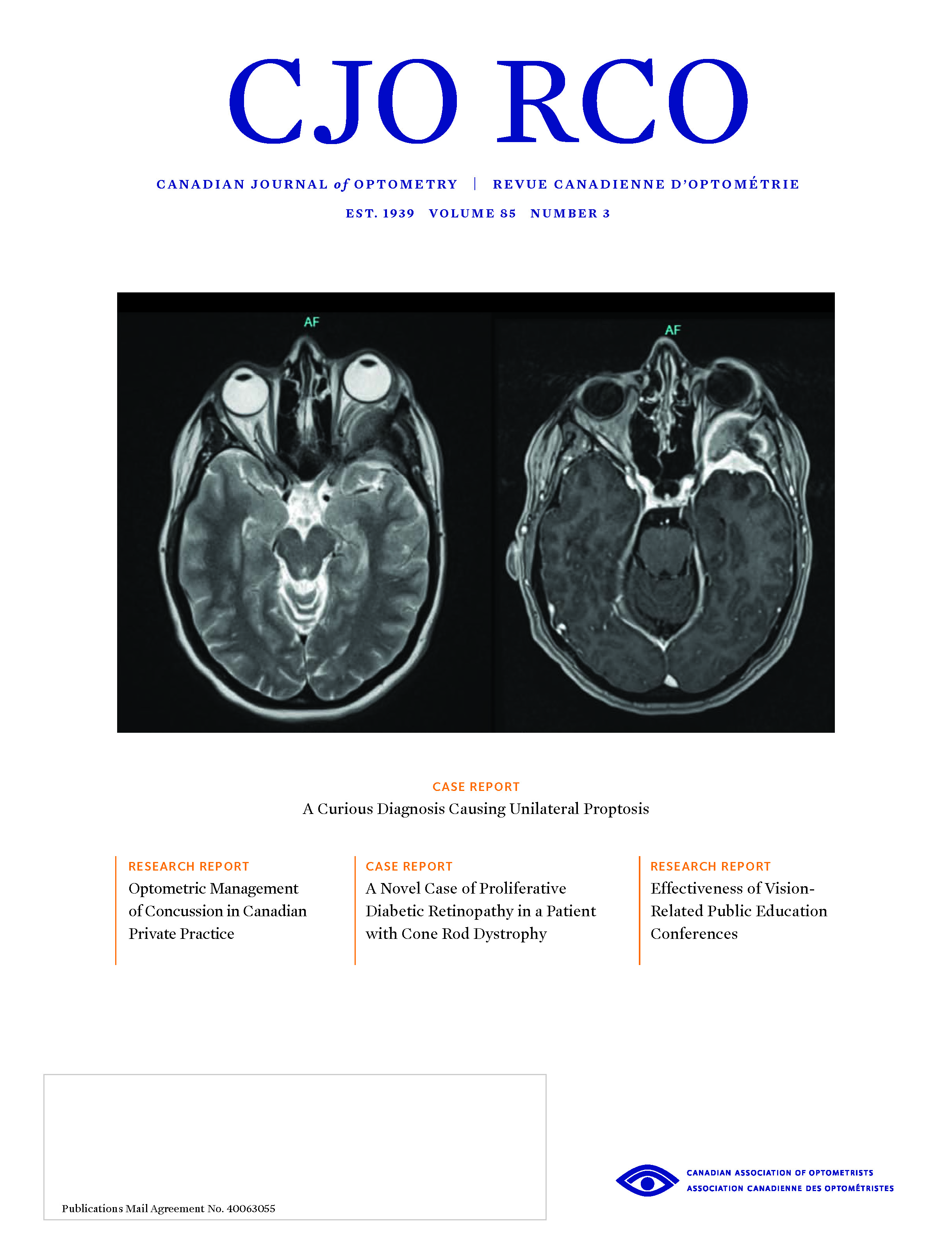Effectiveness of Vision-Related Public Education Conferences
Keywords:
eyecare, vision, public education, conferenceAbstract
Background: Trustworthy public education is required to ensure that Canadians receive the timely, consistent, and comprehensive eye care required to ensure optimal vision. The public education conference is one method to disseminate this information. The purpose of this study is to determine how effective this method is in achieving educational objectives.
Methods: A pre-and post-survey was created and disseminated at a Center for Sight Enhancement hosted public education conference. The survey questions addressed perceived knowledge gained, attitudes regarding the presence of symptoms in eye disease and the importance of eye exams.
Results: Of the 74 conference attendees, 27 completed the pre survey and 24 completed it post conference. There was a statistically significant increase in perceived knowledge gained in all conference areas. There was no statistically significant improvement in the awareness of the asymptomatic nature of early eye disease or the importance of eye examinations.
Conclusion: Public education conferences are an effective method of eye care knowledge dissemination.
References
Shah T, Milosavljevic S, Bath B. Geographic availability to optometry services across Canada: mapping distribution, need and self-reported use. BMC Health Serv Res 2020;20, 639. https://doi.org/10.1186/s12913-020-05499-6
Jin YP, Trope GE. Eye care utilization in Canada: disparity in the publicly funded health care system. Canadian Journal of Ophthalmology 2011;46(2):133–138.
Sloan FA, Picone G, Brown DS, Lee PP. Longitudinal analysis of the relationship between regular eye examinations and changes in visual and functional status. J Am Geriatr Soc 2005;53(11):1867-74.
Picone G, Brown D, Sloan F, Lee P. Do routine eye exams improve vision? Int J Health Care Finance Econ 2004;4(1):43-63.
Wang F, Ford D, Tielsch JM et al. Undetected eye disease in a primary care clinic population. Arch Intern Med 1994;154:1821-1828.
Spafford MM, Jones DA, Christian LW, et al. What the Canadian public (mis)understands about eyes and eye care. Clin Exper Optom 2021. DOI: 10.1080/08164622.2021.2008793
Venne J. Eye health month: the challenges of eye health in Canada. Optik 2012;10:18-21.
Irving EL, Sivak AM, Spafford MM. "I can see fine": patient knowledge of eye care. Ophthalmic & Physiological Optics 2018;38(4): 422–431.
Scott AW, Bressler NM, Ffolkes S, Wittenborn JS, Jorkasky J. Public attitudes about eye and vision health. JAMA Ophthalmology 2016;134(10):188(17-18), E474–E483.
Spafford MM, Rudman DL, Leipert BD, Klinger L, Huot S. When self-presentation trumps access: why older adults with low vision go without low-vision services. J App Ger 2009;29:579-602.
Nia K, Markowitz SN. Provision and utilization of low-vision rehabilitation services in Toronto. Can J Ophthalmol 2007;42(5):698-702.
Lam N, Leat SJ. Barriers to accessing low-vision care: the patient’s perspective. Can J Ophthalmol 2018;48(6):458-462.
O’Day B. Employment barriers for people with visual impairments. Journal of Visual Impairment and Blindness 1999; 93(10): 627.
Capella-McDonnal ME. Predictors of competitive employment for blind and visually impaired consumers of vocational rehabilitation services. Journal of Visual Impairment & Blindness May 2005; 303-315.
Ivers RQ, Cumming RG, Mitchell P, Attebo K. Visual impairment and falls in older adults: the Blue Mountains Eye Study. JAGS 1998; 46(1): 58-64.
Burmedi, Becker, Heyl, Wahl, Himmelsbach. Emotional and Social Consequences of Age Related Low Vision. Visual Impairment. 2002; Vol 4(1).
Weinreb RN, Aung T, Medeiros FA. The Pathophysiology and Treatment of Glaucoma: A Review. JAMA. 2014;311(18):1901–1911.
Published
How to Cite
Issue
Section
License
Copyright (c) 2024 Tammy Labreche, Elizabeth Irving

This work is licensed under a Creative Commons Attribution-NonCommercial-NoDerivatives 4.0 International License.


